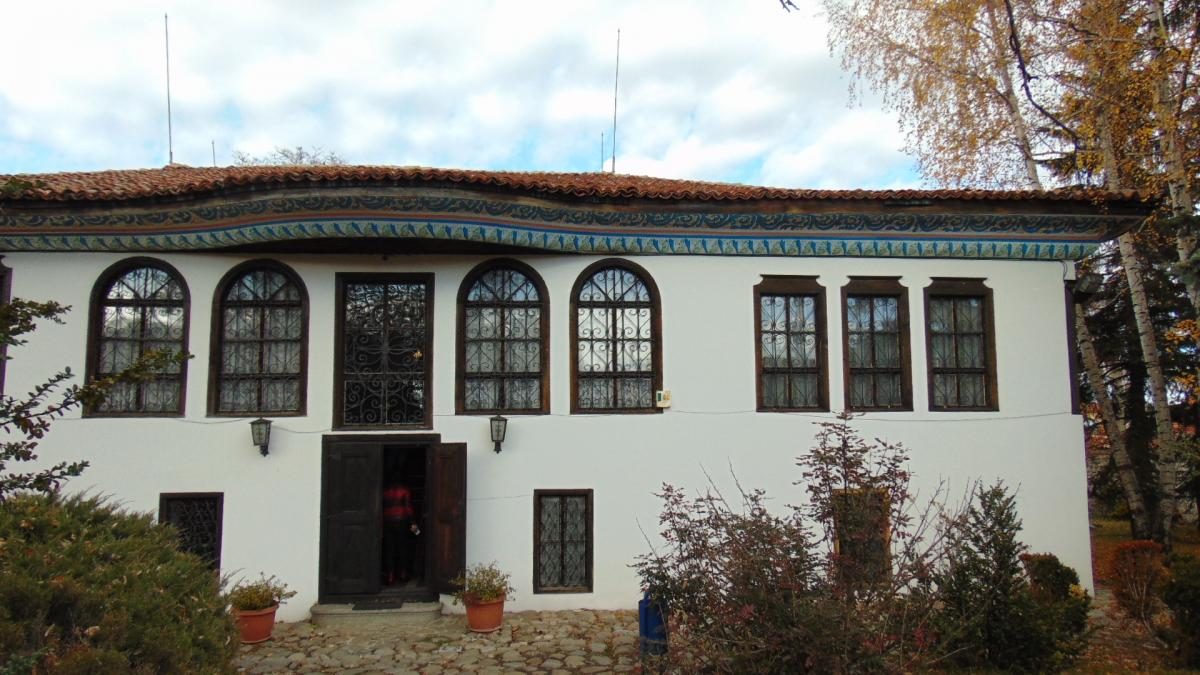The Jewish community in Bulgaria
“If you ask ten people about the origins of the Jewish community in Bulgaria, you will receive at least 15 different answers.” – said Dr.Maxim Delchev from the Organization of Jews in Bulgaria “Shalom.”
There was no clear data when the Jews settled on Bulgarian lands for the first time. One of the theories is that the Jews inhabited Bulgaria from the late antiquity and the Middle Ages to the present day. The first Jews moved to the Balkans after the demolition of Jerusalem by Roman legions and settled along the coastal towns along the Danube river and the Black Sea. Recent excavations revealed ancient ruins of synagogues in Plovdiv, Nikopol, Sofia. In the later centuries Jewish communities also in other Bulgarian cities like Samokov.
Jewish community in Samokov
My family has its roots in Samokov, so I grew up with a story local people were telling about a Jewish family that contributed to the whole community. It is like a fairytale that began in the middle of the second half of the 19th century, which is the era of the Bulgarian Renaissance. The accelerated development of fresco art and cultural life created favorable conditions for lively housing construction. The emerging bourgeois class was rich enough and had new views and a new way of life. Those factors contributed to the birth of a new social group that placed new, higher requirements for its home. The houses became more spacious, prominent, and representative of this era. So a new type of city-house symmetry appeared. These large buildings were evidence of the wealth of the emerging Bulgarian bourgeoisie and its life. The impressive architecture of the houses and the fabulous story of one Jewish family in Samokov made me write about them.
The first evidence of the Jewish settlement in Samokov dates from the second half of the 18th century, and it is described in a unique Jewish documentary, the famous chronicle of the Arie family, written in 1913 and later translated by A. Hananel and E. Eskenazi. It has been accepted by many historians, ethnographers and art historians as a reliable historical source and has been repeatedly used by the researchers of the town of Samokov – Hristo Temelski and Anna Roskovska.
The rise and fall of the Arie family
According to local guides, the story of the Arie family is fascinating, romantic, fabulous. It was written for 35 years by members of the family and included documents, memoirs and even a family three. The authors of the chronicle called it “Biografia por la fimilia Arie,” that is, “The biography of the Arie family.” It is known to contain 2400 pages of the Arie family history.
One of the most famous stories local people tell about the Aries is how they got to Bulgaria. Lord Moshe Abraham Arie had three sons. Moshe loved his sons more than anything because they were exceptional and gorgeous, especially Abraham. One day Empress Jozefina saw the beautiful boy walking on the streets of Vienna and loved him like he was her own. She didn’t have children, so she took Abraham in the palace to raise him, educate him, and fulfill all his desires. The Emperor didn’t know anything about the boy, but when he found out, he was so furious that he ordered the Court to sue the Empress for treason.
The judges didn’t want to sue a royal family member, so they decided to expulse all Aries, Abraham included, out of Austria and forget about the case. The Aries traveled through whole Europe to find a haven in Vidin. With the little money, the family had Moshe opened a small shop on the main city street. Just for a short period, he found clients from the elite, and everyone loved him and helped him. The family settled in Vidin bought a house and a second shop, but after the death of Moshe the commerce went down, and the Aries were broke again.
The first Arie in Samokov
The three Arie brothers split and started a new life. Abraham went to Sofia but couldn’t find a job, so he was forced to leave and try his luck in Samokov. Upon his arrival in Samokov in the town lived 25 Jewish families. He became part of the small community, and for a short time, Abraham became rich and started large-scale construction of houses compared to palaces. According to the stories he was used to the life in the Empress` palace, so he wanted a home like the one he left in Vienna. Only for a few decades, the Arie family returned to its wealth and power because Abraham was the only local merchant who maintained ties with the Ottoman Empire. Abraham Arie became a wealthy and respected citizen, unanimously recognized as the leader of the Samokov Jews. His home became a gathering point for the whole community and all his friends. In the middle of the 19th century, Aries became the initiators of the construction of a new synagogue in town. Even today above the building’s entrance, a plate states the names of the Aries in gold letters. What is more, the Jewish family built a small private chapel where scholars educated children, read the Jewish law there, and even discuss juridical issues of the community. Аll these acts made the Arie family leaves their traces in Samokov’s history.
The Sarafsky house- memory of the bourgeois past and heritage for the future generations
The one preserved Sarafsky House of the five homes in Samokov is a typical example of a house of type- Bulgarian Renaissance architecture. Its construction took six years, and its area is 380 square meters. Many Samokov masters take part in its decoration. The carved the ceilings, the fresco of the House was made by masters from the Samokov school of art. The famous Odrin architect Stefan designed the architecture of the House. The furniture was delivered from Vienna because Abraham wanted it to resemble the palace he grows up in. The Arie house, apart from artistic and historical significance, also has cultural significance. Due to its valuable architectural qualities, the Sarafsky house is declared a monument of culture of national importance. From 1968 to 1971 it was completely restored and nowadays the House is maintained by the fund “13 centuries Bulgaria”. The House is accessible to anyone who values and cares for our architectural and historical heritage.
Gradually, through the social activities, financial support of several generations of Arie, the Jewish community in the city is territorially differentiated and favors its social life following its religious norms and traditions. Buildings like the Synagogue, the Arie’s private chapel, and even the Arie’s home are cultural landmarks in Jewish community history. Those buildings represent the rises and falls of the family; the progress of the Jewish society in town. Aries’s presence in Samokov is symbolic not only because they helped to build the landmarks for the Jewish community but also because they helped build the community itself.



